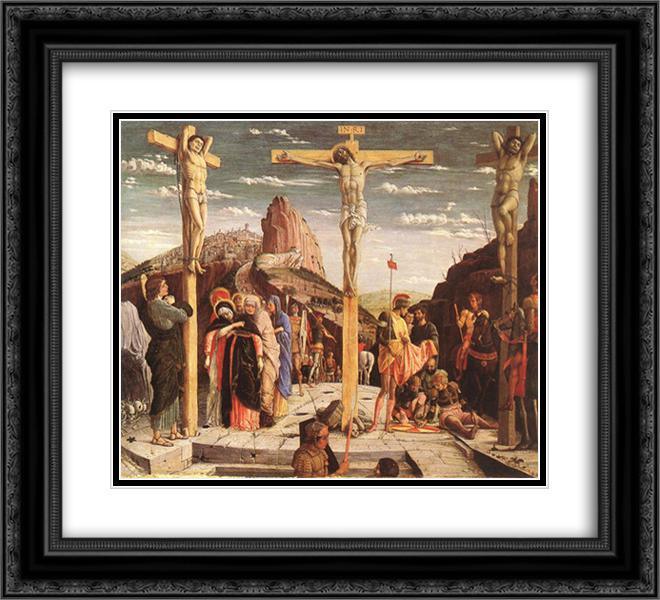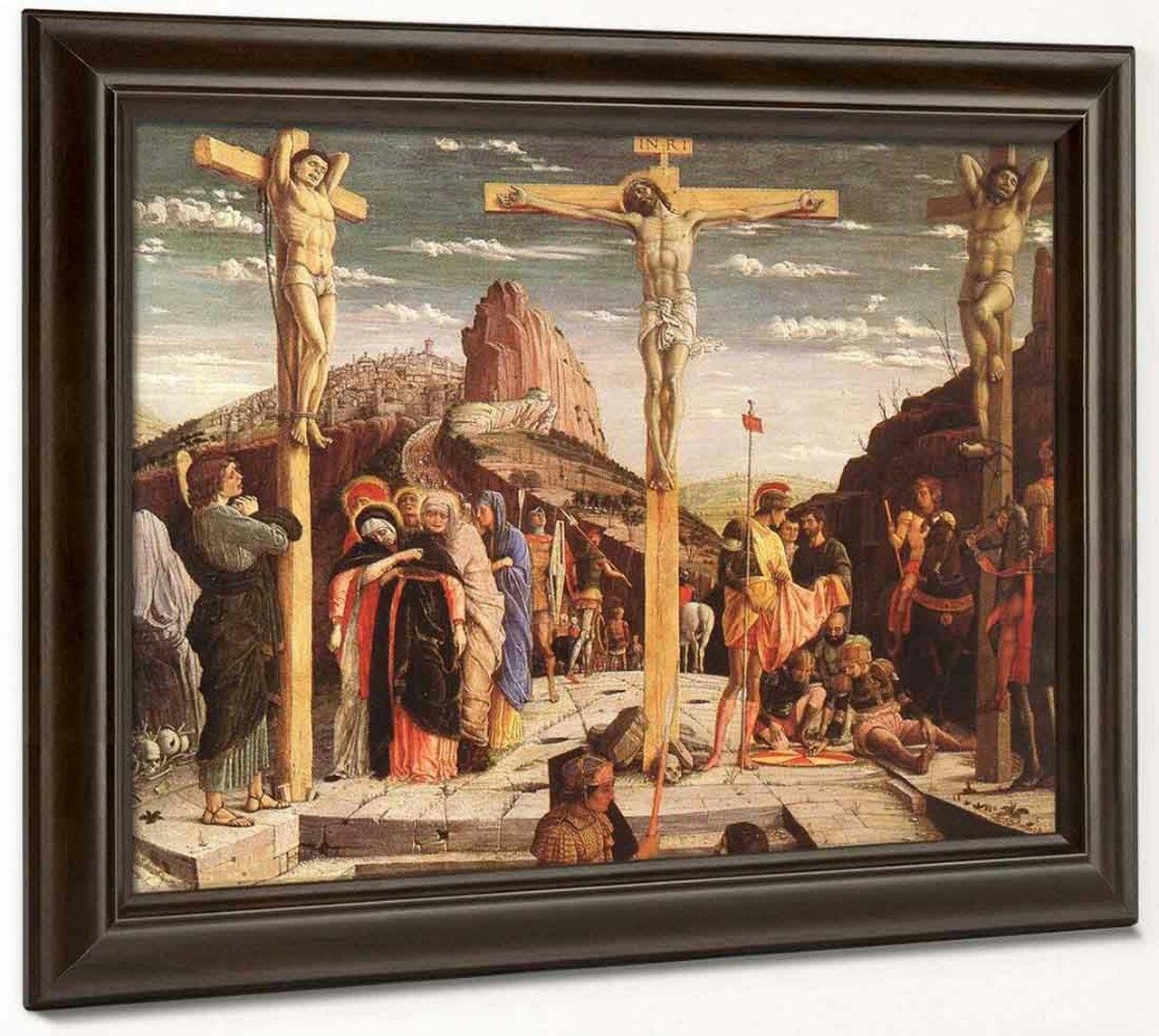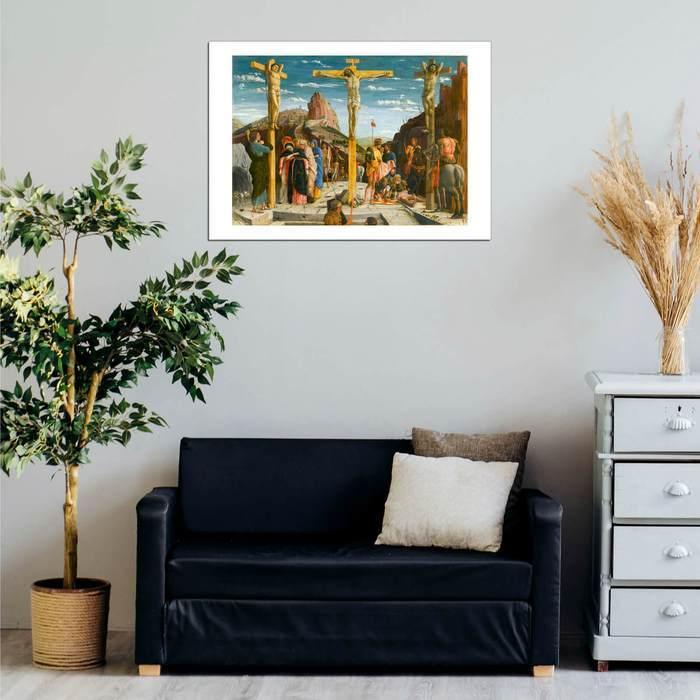Description
The Crucifixion is a 15th-century painting by Andrea Mantegna. It is one of three panels that decorate the predella of the San Zeno altarpiece in Verona, Italy. The image is exhibited in the Louvre in Paris.
This is one of the three panels that form the predella of the altarpiece that Mantegna made for San Zeno. The original painting is in the Louvre. The San Zeno predella currently shows a copy.
The painting is an example of Mantegna's excellent control of perspective, which is applied in two ways: atmospheric and linear.
Atmospheric perspective is created by the gradient from dark to light in the sky. To our eyes, light colors appear to be farther away than dark colors. On the horizon, the light blue of the sky merges with the light green of the landscape.
Linear perspective is applied in various ways. The crosses of the assassins (to the left and right of Jesus) have been turned slightly inward, thus creating diagonal lines leading to a point in the distance. So does the mountain ridge to the right. Even the cracks in the ground contribute to the composition of the painting.
Perspective is what makes this painting as effective as it is. The main vanishing point is behind the cross of Jesus and this makes the painting look like you are under Jesus looking up at the cross. Using this vanishing point accomplishes several different things. He dramatizes the scene and magnifies it so that viewers feel drawn into the space of the image (The Crucifixion).
The Crucifixion has an allegorical spherical feel. This circle is formed, with the cross as its center, by the plateau and the slope that separate the sections of the painting. This is supposed to demonstrate the idea, in the Christian tradition, that Jerusalem is the religious center of the world. Golgotha is also shown in the background on top of the mountain. Golgotha is supposedly the place where Adam was created and buried and where the cross was erected that changed the course of this world by saving all mankind through crucifixion.
In 1798 the French removed The Crucifixion from the monastery of San Zeno and exhibited it in the Louvre in Paris. The museum in Tours, France later received the other two predella panels. It is possible to see a copy of the three panels in the predella of the monastery of San Zeno. The original panels are on display in Paris.





